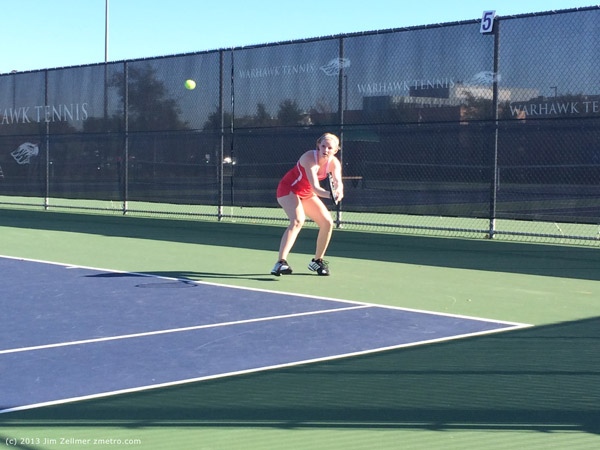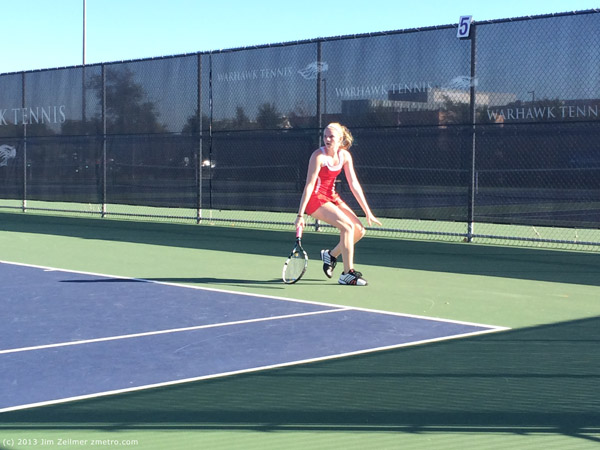Markey reacted to a story in last Saturday’s New York Times examining how the online advertising industry is now able to track consumers across the various platforms and devices they use, often without the user’s knowledge or consent.
That Times’ scoop followed an Oct. 2 report about how the National Security Agency conducted a secret pilot program in 2010 and 2011 to test the collection of bulk data about the location of Americans’ cell phones. That pilot program was never carried out.
Even so, Markey said in a statement issued late Thursday to reporters that he is “concerned about the increasing practice of marketers scooping up digital traces from our phones, tablets and computers that are then stitched together into detailed dossiers without consumers’ knowledge or permission.”
In a separate — but very much related development on Thursday — data management firm Identity Finder disclosed how the caching mechanism in Google’s popular Chrome browser stores unencrypted personal data in a way that makes it trivial for hackers to steal.
Toyota iRoad Concept
“So that’s why everyone comes back with a smile on their face,” said the Toyota translator as she pulled up in the i-Road tilting-trike concept after begging a short drive.
If you thought the appearance of this space-age tandem two seater was pretty wacky when it first appeared at the Geneva Motor Show last March, let me tell you, the driving experience is equally out of this world.
It’s also more fun than it has a right to be, our translator completely nailed it. No one climbs out of i-Road without a silly grin on their visog, although rear passengers tend to have a slightly horrified look. As for chief engineer Akihiro Yanaka’s idea of selling the idea of swooping around town in one of these to pensioners, well it would have to be a super granny who put her shopping basket into an i-Road.
Designed in house by Koji Fujita with its tilting battery-electric driveline engineered by a team under Yanaka, the i-Road is an urban runabout concept.The motor industry has a long history of both three wheels going back to the earliest Morgan trikes and tilting bodies going back to the Thirties and more recently with a series of Mercedes-Benz concepts the 1997 Lifejet and 2002 Carving and BMW’s tilting tricycle eco concepts. As with the 1970s Advanced Passenger Train or more recent Pendolino trains, tilting a car’s body allows it to cope with more horizontal force so you can corner faster and more safely.
iPhone 5s & Sports Photography?
I have long enjoyed taking sports photos, particularly those of our children along with their friends, teammates and from time to time, competitors.
Lugging around a big, but excellent Canon zoom with the occasional extender offers its rewards. The images are sublime:
Yet, technology marches on, possibly leaving the incumbent camera manufacturers in the dust (Scroll down a bit to catch “Fake Chuck’s” worthwhile rant on smartphone competition).
Apple has continued to improve the iPhone’s still and moving image capability. The photos are remarkable for such a small yet powerful computer. I recently had an opportunity to capture a number of outdoor tennis images with the new iPhone 5s (unlocked).
Lack of a big zoom requires quite a bit of moving around, something that is not always possible in an active sports venue.
Seated about 20 to 25 feet (6 to 7.6m) away from the players, I used the iPhone 5s’s camera app, digitally zoomed in and tried to focus on the moving player. I attempted to anticipate action. I then pressed and held the camera app’s shutter button. The iPhone 5s captures ten (!) frames per second in “burst mode”.
A few examples:
While the iPhone 5s will not completely supplant the big lens crowd, perhaps the next generation or two might. What software techniques might drive the next round of improvements? Three come to mind:
1. Focus Stacking. Focustwist app.
2. Lytro
3. Panoramic techniques used in combination with one and two above.
Next, a look at the Sony’s WiFi camera lens for iPhone and Android. A fascinating concept, though constrained by usability and battery issues.
The Ethics of Autonomous Cars
If a small tree branch pokes out onto a highway and there’s no incoming traffic, we’d simply drift a little into the opposite lane and drive around it. But an automated car might come to a full stop, as it dutifully observes traffic laws that prohibit crossing a double-yellow line. This unexpected move would avoid bumping the object in front, but then cause a crash with the human drivers behind it.
Should we trust robotic cars to share our road, just because they are programmed to obey the law and avoid crashes?
Our laws are ill-equipped to deal with the rise of these vehicles (sometimes called “automated”, “self-driving”, “driverless”, and “robot” cars—I will use these interchangeably). For example, is it enough for a robot car to pass a human driving test? In licensing automated cars as street-legal, some commentators believe that it’d be unfair to hold manufacturers to a higher standard than humans, that is, to make an automated car undergo a much more rigorous test than a new teenage driver.
But there are important differences between humans and machines that could warrant a stricter test. For one thing, we’re reasonably confident that human drivers can exercise judgment in a wide range of dynamic situations that don’t appear in a standard 40-minute driving test; we presume they can act ethically and wisely. Autonomous cars are new technologies and won’t have that track record for quite some time.
Moreover, as we all know, ethics and law often diverge, and good judgment could compel us to act illegally. For example, sometimes drivers might legitimately want to, say, go faster than the speed limit in an emergency. Should robot cars never break the law in autonomous mode? If robot cars faithfully follow laws and regulations, then they might refuse to drive in auto-mode if a tire is under-inflated or a headlight is broken, even in the daytime when it’s not needed.
Casanovas on Foot Baffle Toyota CEO as Japan Sales Shrink: Cars
Yuki Hagiwara, Ma Jie & Anna Mukai:
While Toyota Motor Corp. (7203) President Akio Toyoda is on the cusp of a record year for profit, kids nowadays make him nervous. They’re so clueless that boys without cars have the nerve to ask girls out.
Akio Toyoda, president of Toyota Motor Corp., center, who’s said he loves the smell of gasoline, talked about his passion for cars and how they shouldn’t be commoditized like fridges, but rather loved like babies or pets.
“In the past, if you wanted to date someone, you couldn’t ask her out if you didn’t have a car,” Toyoda, 57, told a packed auditorium of about 900 Meiji University students in Tokyo on Sept. 26. “It’s all changed now. Money goes on monthly phone bills. Also, parking’s expensive and it’s easy to get around Tokyo on public transport.”
Though he’s kidding about the dating, the underlying theme is no joke. Among the biggest conundrums facing automakers: how to make cars cool again. Japan’s aging population makes the mission more critical, with passenger-vehicle sales more than 20 percent down from their 1990 highs and the proportion of drivers in their 20s at half the level when Toyoda’s generation reached an age when they could sit behind the wheel.
“Younger Japanese are quite different from the older Japanese and cars mean much less to many than 20 or 25 years ago,” said Edwin Merner, president of Atlantis Investment Research Corp. in Tokyo, who’s been in Japan since the 1970s. “They’re more interested in tech gadgets, like the iPhone. Young people nowadays don’t have the money to buy cars too.”
As chairman of the Japan Automobile Manufacturers Association, Toyoda is leading a one-month campaign to preach the virtues of being a motorhead to students. The presidents of Honda Motor Co., Subaru-maker Fuji Heavy Industries Ltd. (7270) and Mitsubishi Motors Corp. (7211) plan to follow.
Poland and Kaliningrad Small Border Traffic
WHEN Poland and Lithuania joined the European Union in 2004, many were concerned that the Russia exclave of 950,000 inhabitants would be cut off, once surrounded by EU members. (Just under half live in the city of Kaliningrad—east Prussia’s Königsberg until Stalin annexed it 60 years ago.) This changed with Poland’s law on “small-border-traffic”, signed by Russia in December 2011.
Almost two years on, the response to the small-border-traffic law has been very positive.Locals on both sides of the border can apply for a card that allows them to cross the border repeatedly, without the hassle of getting a visa. (Poland has a similar deal with Ukraine). The law encompasses all of Russia’s Kaliningrad region, and includes Olsztyn, Elbl?g and Gda?sk on the Polish side. Other Russians still need a visa to enter Poland, and vice versa.
Card in hand, Kaliningrad’s inhabitants are flocking to Poland, drawn by cheaper groceries, but also DIY shops and Ikea, a Swedish furniture store. Some say they visit a few times a month. In July, the Polish consulate in Kaliningrad issued the hundred thousandth card. Poland is considering opening two new border crossings to cope with demand. Local Poles are also using the card to travel to Kaliningrad, though in smaller numbers.
These trips to Poland are satirised in a recent song by Parovoz, a music group from Kaliningrad, with the chorus “Zdrastvuy Biedronka, zrastvuy Lidl” (hello Biedronka, hello Lidl – two discount supermarkets popular in Poland). Timur Titarenko, the band leader, says he got the idea for the song while queuing at the border on his way to spend a day in Poland. The song has been spreading online; on YouTube, a version with Polish subtitles has had over 200,000 views in two weeks.
Taxpayer Subsidies Helped Tesla Motors, So Why Does Elon Musk Slam Them?
It’s rush hour in Silicon Valley, and the techies on Highway 101 are shooting me laser-beam stares of envy. Beneath the floorboard of my Tesla Model S, a liquid-cooled pack of 7,000 laptop batteries propels me down the carpool lane at a hushed 65 miles per hour. Then traffic grinds to a halt, and I’m stuck trying to merge onto an exit ramp as Benzes and BMWs whip past. It’s the excuse I’m waiting for: I punch the throttle, and the Model S rockets back up to speed so fast that I worry about flying off the road—a silly fear, it turns out, because the car corners like a barn swallow. “And there you go,” says Tina, my beaming Tesla sales rep. “Takeoff!”
Every bit as practical as a Volvo (rear-facing trundle seat!) and sexier than an Aston Martin, the Model S isn’t just the world’s greatest electric car—it’s arguably the world’s greatest car, period. The curmudgeons at Consumer Reports call the seven-seater the best vehicle they’ve ever tested, and that’s after docking it considerable points for only—only!—being able to travel 265 miles on a charge. The first mass-market electric car designed from scratch, it sports huge trunks in the rear and under the hood, an incredibly low center of gravity, and the ability to hit 60 mph in 4.2 seconds. Plus you can recharge it for the price of a burrito. Named car of the year by Motor Trend, the Model S has recharged Tesla as well. In May, the company announced that it had repaid, nine years early, a $465 million loan it had received from the Department of Energy.
Tesla posted its first quarterly profit the same month, and by mid-July the share price of the decade-old Palo Alto-based carmaker had more than doubled. The buzz in the Valley is that Tesla has in the Model S something with the disruptive potential of the iPhone—and in its CEO, Elon Musk, the next Steve Jobs. “Individuals come along very rarely that are both as creative and driven as that,” says Jim Motavalli, who writes for the New York Times’ Wheels blog. “Musk is not going to settle for a product that is good enough for the marketplace. He wants something that is insanely great.”
It was a Saab, a Red Saab
Dusk. The windows must be down. Saturday night. 72F / 22C. A warm breeze. Fresh air. A quick left, then the middle lane. Accelerate. Stop light. Sprint. Left lane. Wait for traffic, turn left. A quick right, more traffic.
Then, a red car. An unusual shape. Windows open as well.
Left hand knifing in and out of the driver’s window. Something in the driver’s hand.
Dangling.
Fast motions. We share the same lane. Accelerate. Paddles.
The breeze delights.
Crossing State street – slowly, lots of people walking and biking.
Nancy: “I think we are sharing his joint”.
The red Saab drifts in and out of the center lane. The left hand continues to dangle, the joint slicing the breeze.
Then, we part company, the joint a quick left, destination unknown, while we continue on our tried and true path to dinner.
Windows down. A terrific October breeze.
A red Saab, an unusual Saabaru, the 9-2x.
Another edition of my “auto anthropology” observations.
Cars? Asymcar.
Super highway: A14 to become Britain’s first internet-connected road Technology on busy road connecting Birmingham and Felixstowe could pave way for self-driving cars
One of the UK’s most congested highways, connecting the busy container port at Felixstowe to Birmingham, is to become Britain’s first internet-connected road in a pilot project that could pave the way for everything from tolls to self-driving cars.
A network of sensors will be placed along a 50-mile stretch of the A14 in a collaboration between BT, the Department for Transport and the Cambridge start-up Neul, creating a smart road which can monitor traffic by sending signals to and from mobile phones in moving vehicles.
The technology, which sends signals over the white spaces between television channels instead of mobile phone networks, could even pave the way for government systems to automatically control car speeds.
The telecoms watchdog Ofcom, which on Wednesday approved the project as part of its new blueprint for how Britain will use spectrum, is already forecasting what high technology traffic systems will look like.
“Sensors in cars and on the roads monitor the build-up of congestions and wirelessly send this information to a central traffic control system, which automatically imposes variable speed limits that smooth the flow of traffic,” Ofcom said. “This system could also communicate directly with cars, directing them along diverted routes to avoid the congestion and even managing their speed.”
Real time media map of the 50 states
Last March, Bitly teamed up with Forbes to produce a data visualization which looks at how 15 media properties are being disproportionately consumed online on a state-by-state basis over the month of April. We had various preconceived notions of which state’s residents are more likely to consume news sites from certain newspapers, televised news, news magazines and online-only news properties.







